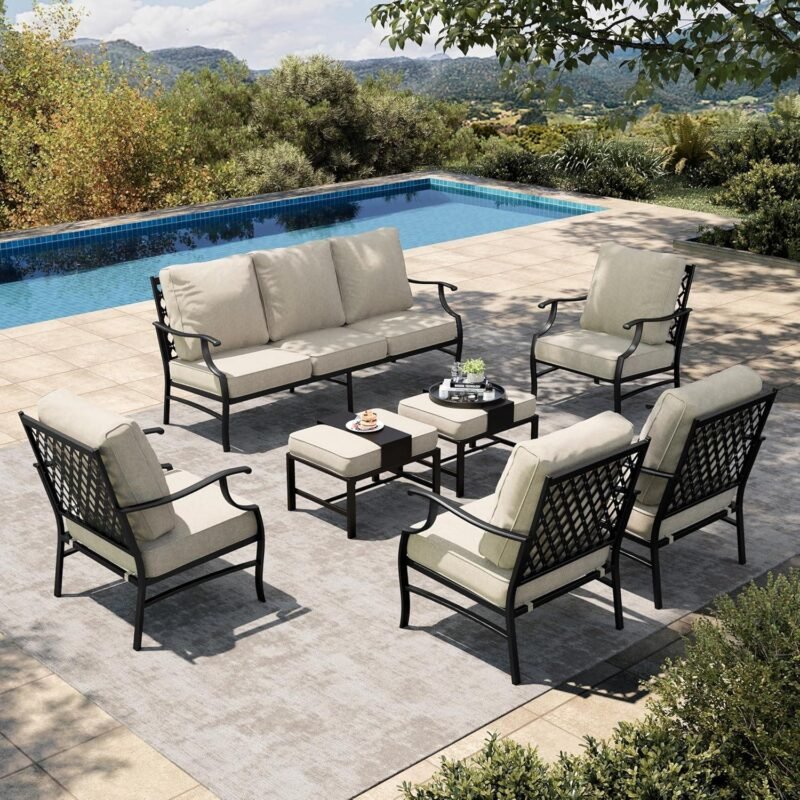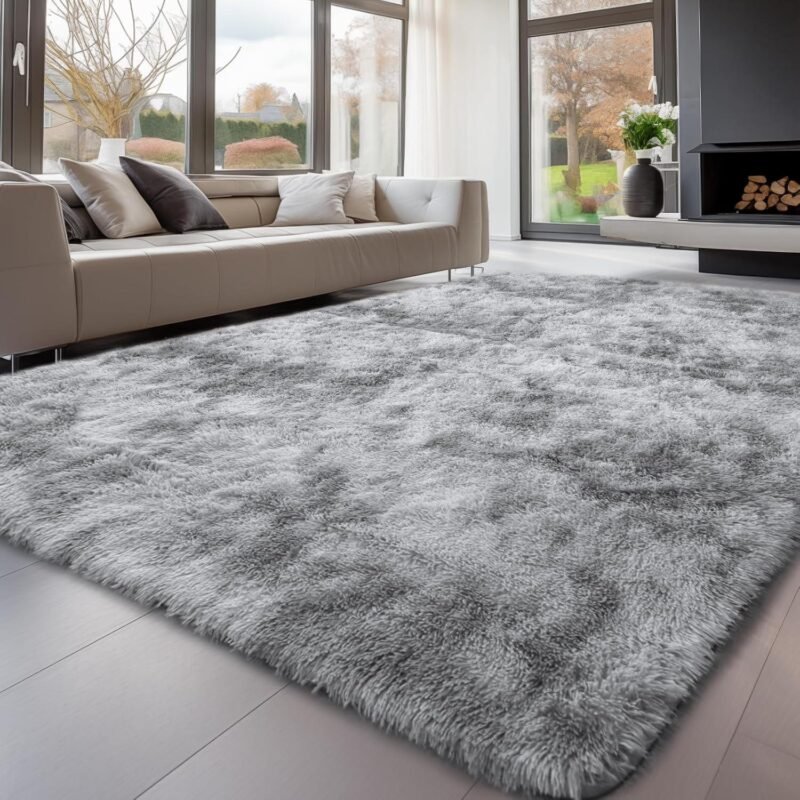Blog
Home Improvement Tips That Contractors Don’t Want You to Know
Home Improvement Tips That Contractors Don’t Want You to Know
To improve your home, start by evaluating your space and identifying areas that need upgrades, whether for comfort or functionality. Set a realistic budget prioritizing essential upgrades, and consider DIY versus hiring professionals based on your skills. Equip yourself with essential tools, and focus on easy aesthetics boosts like curb appeal and storage solutions. To save money, explore energy-efficient upgrades. There’s a wealth of tips waiting to help you elevate your space further.
Key Takeaways
- Assess your space layout and functionality to identify areas needing improvement and establish clear goals for enhancements.
- Set a realistic budget that prioritizes essential upgrades while accounting for unexpected costs to avoid overspending.
- Invest in essential tools and safety gear, ensuring proper usage and maintenance for effective home improvement projects.
- Enhance aesthetics with cohesive color schemes and simple upgrades, such as improved lighting and landscaping, to boost curb appeal.
- Implement energy-efficient upgrades like solar panels and LED lighting to save money and reduce environmental impact.
Assessing Your Space: Identifying Areas for Improvement
How do you know which areas of your home need improvement? Start by evaluating your space layout.
Walk through each room and take note of what feels cramped or unwelcoming. Are there areas that lack functionality or comfort? Make a list of improvement goals based on your observations.
Consider how you use each space daily and if it meets your needs. Look for opportunities to enhance flow, such as rearranging furniture for better movement or adding storage solutions to declutter.
Don’t forget to assess lighting and color schemes, as these can greatly influence the atmosphere of your home.
Budgeting for Home Renovations: Tips for Smart Spending
IMAGE_0
When planning your home renovations, it’s vital to set a realistic budget that reflects your financial situation and project goals.
Prioritize essential upgrades to guarantee you’re addressing the most critical areas first, and look for cost-effective solutions to maximize your spending power.
Set a Realistic Budget
Setting a realistic budget for your home renovations is essential, as it directly impacts the success of your project. Start by defining your overall budget, taking into account both your financial situation and the scope of your renovation.
Establish realistic expectations for what you can achieve within your budget. Utilize budget tracking tools to monitor expenses, helping you stay on course and avoid overspending.
Don’t forget to factor in unexpected costs, which often arise during renovations. It’s wise to set aside a contingency fund, typically around 10-20% of your budget.
Prioritize Essential Upgrades
While planning your home renovations, it’s crucial to prioritize essential upgrades that will add the most value and functionality to your space. By focusing on these essential priorities, you’ll create an upgrade timeline that maximizes your investment.
Here’s a simple table to help you identify key upgrades:
| Upgrade Type | Estimated Cost | Impact on Home Value |
|---|---|---|
| Kitchen Remodel | $15,000 | High |
| Bathroom Update | $10,000 | High |
| Energy-Efficient Windows | $8,000 | Medium |
Explore Cost-Effective Solutions
To make the most of your home renovation budget, it’s essential to explore cost-effective solutions that can deliver impressive results without breaking the bank.
Start by considering sustainable materials; they not only benefit the environment but can also save you money in the long run. For instance, reclaimed wood or bamboo can add character while being budget-friendly.
Additionally, focus on budget-friendly upgrades like fresh paint, updated fixtures, or energy-efficient appliances. These changes can transform your space without a hefty price tag.
Finally, don’t hesitate to shop sales or repurpose existing items—creativity can lead to unique solutions.
With thoughtful planning, you can achieve a beautiful home that reflects your style and fits your budget.
DIY vs. Hiring Professionals: Making the Right Choice
IMAGE_1
How do you decide between tackling a home improvement project yourself or hiring a professional? Start by considering the project complexity and your skills assessment. DIY advantages include cost savings and personal satisfaction, but weigh these against the professional expertise that can guarantee quality.
Here’s a quick comparison:
| Factor | DIY | Hiring Professional |
|---|---|---|
| Cost Comparison | Lower initial cost | Higher upfront cost |
| Time Considerations | Time-consuming | Faster completion |
| Long Term Benefits | Potential for mistakes | Warranty options |
Evaluate your time and ability against the potential long-term benefits of hiring a pro. This way, you can make an informed choice that suits your needs and desires.
Essential Tools Every Homeowner Should Have
Every homeowner should have a solid set of essential tools to tackle common repairs and improvements.
Start with basic hand tools like hammers, screwdrivers, and pliers, then equip yourself with power tool essentials such as a drill and a circular saw.
Having these tools on hand not only saves time but also empowers you to handle a variety of projects confidently.
Basic Hand Tools
A well-equipped toolbox is vital for any homeowner looking to tackle DIY projects and routine repairs. Start with a reliable hammer, as understanding hammer types—claw, sledge, and ball-peen—will help you choose the right one for your tasks.
Next, add a set of screwdrivers, both flathead and Phillips, to handle various screws. A tape measure is important for accurate measurements, while a utility knife comes in handy for cutting tasks.
Don’t forget a level to guarantee everything’s straight. Regular tool maintenance is key; keep your tools clean, rust-free, and sharp.
Investing in these basic hand tools not only empowers you but also fosters a sense of belonging in your home improvement journey.
Power Tool Essentials
While basic hand tools are essential, power tools can greatly enhance your DIY projects and home repairs. To get started, consider investing in a reliable drill, a circular saw, and a jigsaw. These tools offer versatility for various tasks, from drilling holes to cutting materials.
Popular power tool brands like DeWalt and Makita provide durability and performance that you can trust. Don’t forget about safety gear; eye protection and gloves are a must.
Regular power tool maintenance is vital—clean your tools after use, and check batteries and blades regularly to guarantee they’re in top shape. By choosing the right tools and keeping them well-maintained, you’ll feel empowered to tackle any home improvement project with confidence.
Simple Upgrades to Boost Curb Appeal
Boosting your home’s curb appeal doesn’t have to be an intimidating task; with just a few simple upgrades, you can greatly enhance the first impression your property makes.
Consider these effective changes:
- Front porch enhancements: Add cozy seating or vibrant plants.
- Landscaping accents: Incorporate colorful flowers and decorative stones.
- Exterior lighting: Install stylish fixtures to illuminate pathways.
- Mailbox makeover: Refresh it with paint or new hardware.
- Entryway upgrades: Replace outdated door hardware for a modern touch.
These upgrades not only beautify your home but also create a welcoming atmosphere that resonates with visitors.
With thoughtful touches like window treatments and garden decor, your home can reflect your unique style and invite a sense of belonging.
Choosing the Right Paint Colors for Every Room
Choosing the right paint colors can transform your home, but it’s essential to contemplate how colors influence mood and functionality.
Think about the purpose of each room and how different shades interact with light and space.
Understanding Color Psychology
When it comes to transforming a space, the colors you choose for your walls can profoundly impact the mood and atmosphere of a room.
Understanding color psychology helps you make informed decisions based on color associations and emotional effects. Here are some key points to reflect on:
- Blue: Promotes calmness and serenity, ideal for bedrooms.
- Yellow: Evokes happiness and energy, perfect for kitchens or playrooms.
- Green: Represents nature, balance, and harmony, suitable for living rooms.
- Red: Stimulates passion and excitement, great for dining areas.
- Neutral tones: Create a sense of tranquility and allow versatility with decor.
Room Function Considerations
Since each room in your home serves a unique purpose, selecting the right paint color can enhance its functionality and ambiance.
Consider your room layout and the specific functional zones within each space. For instance, soft blues or greens can create a calming atmosphere in bedrooms, promoting relaxation. In contrast, vibrant yellows or oranges might invigorate a kitchen, encouraging energy and creativity.
When choosing colors, think about how they interact with natural light and existing furnishings. Additionally, consider the flow between rooms; cohesive color schemes can tie your home together, fostering a sense of belonging.
Light and Space Effects
Understanding how light interacts with paint colors can transform your perception of space within any room. When choosing colors, consider how natural light will influence your choices, especially in open layouts.
Here are some tips to guide you:
- Light colors can make a small room feel larger.
- Warm tones create a cozy atmosphere, perfect for gathering spaces.
- Cool colors help calm and relax, ideal for bedrooms or bathrooms.
- Accent walls can add depth without overwhelming the space.
- Glossy finishes reflect light, brightening darker areas.
Maximizing Storage Solutions in Small Spaces
Small spaces can be a challenge, but with the right storage solutions, you can maximize every inch of your home.
First, consider vertical storage; wall-mounted shelves not only save floor space but also showcase your decor.
Invest in multi-functional furniture, like ottomans with hidden compartments or beds with under-bed solutions, to keep your belongings organized.
Utilize closet organizers to turn clutter into order, and decorative baskets to add style while hiding items.
Explore modular storage for flexibility that adapts to your needs.
Finally, think about furniture arrangement; positioning pieces wisely can create flow and open up space.
With these space-saving hacks, you’ll find that small doesn’t have to mean cramped. Embrace your space!
Energy Efficiency: Upgrades That Save You Money
Once you’ve optimized your storage in small spaces, it’s time to focus on energy efficiency, which can greatly reduce your monthly bills.
Implementing energy-saving upgrades not only benefits your wallet but also contributes to a sustainable home.
Here are some effective upgrades you can consider:
- Solar panel installation to harness renewable energy
- Energy efficient appliances that consume less power
- Smart thermostats to regulate heating and cooling
- LED lighting for long-lasting, low-energy illumination
- Insulation improvements to maintain temperature and reduce energy loss
Landscaping Ideas to Enhance Your Outdoor Space
How can you transform your outdoor space into a stunning oasis? Start with thoughtful garden design that incorporates native plants, which thrive in your local environment and support local wildlife.
Enhance your space with seasonal flowers for vibrant color year-round. Consider adding hardscaping features like patios or walkways to create defined areas for relaxation and entertainment.
Don’t forget outdoor lighting to highlight your landscape at night, fostering a cozy ambiance. Privacy screens can offer seclusion, making your yard feel like a personal retreat.
Explore eco-friendly landscaping options, such as vertical gardens, to maximize space and greenery.
Safety Tips for Home Improvement Projects
Safety should always be your top priority when tackling home improvement projects. By prioritizing safety, you create a secure environment for yourself and others.
Here are some essential tips to keep in mind:
- Always wear protective gear, like goggles and gloves.
- Keep your worksite organized to prevent accidents.
- Use tools correctly and maintain them well.
- Guarantee proper ventilation when using paints or solvents.
- Have a first aid kit readily available.
Frequently Asked Questions
How Do I Choose the Right Contractor for My Project?
Did you know that 70% of homeowners regret their contractor choice? To avoid that, check contractor qualifications, discuss your project timeline, and guarantee they understand your vision. A good fit makes all the difference!
What Are the Best Materials for Long-Lasting Home Improvements?
When considering long-lasting home improvements, focus on sustainable materials like bamboo or reclaimed wood. These not only enhance your space but also offer cost-effective options that benefit the environment, creating a welcoming atmosphere for you and your family.
How Can I Finance My Home Renovation Project?
Have you considered how you’ll manage your finances during a renovation? Utilize budgeting strategies to plan your expenses, and explore renovation loans for additional funding. This approach can transform your dream project into reality without breaking the bank.
What Permits Do I Need for Home Improvement Projects?
You’ll need to check local building codes to determine which permits apply to your project. Submit permit applications for major renovations, electrical work, or plumbing changes to guarantee compliance and avoid fines during your home improvement.
How Do I Handle Unexpected Issues During Renovations?
When unexpected issues arise, calmly consider budget adjustments and communicate clearly with your team. Prioritize problem-solving and maintain transparency to foster trust. Staying flexible and focused can help you navigate renovations successfully.
Conclusion
As you commence your home improvement journey, remember that each small change can create a ripple effect of transformation. Picture a fresh coat of paint brightening your living room or a well-organized closet turning chaos into calm. With careful budgeting and the right tools, you can tackle projects that not only enhance your space but also reflect your personal style. So grab your toolbox, release your creativity, and watch your home flourish into a sanctuary of comfort and beauty.
Unlock the secrets to transforming your living space with our exclusive post, “Home Improvement Tips That Contractors Don’t Want You to Know”. This eye-opening guide reveals insider knowledge that can save you time, money, and unnecessary stress when upgrading your home.
Dive deep into expert tips that challenge conventional wisdom and empower you to take control of your renovation projects. From savvy budgeting hacks to choosing materials that balance quality and cost, this post sheds light on the strategies contractors often keep under wraps.
Discover:
- Hidden cost-cutting techniques that help you avoid common financial pitfalls.
- The truth behind project timelines and how to manage them effectively.
- How to communicate with contractors like a pro, ensuring your vision becomes reality without compromise.
- Smart DIY insights to confidently handle certain tasks yourself, boosting your home’s value without breaking the bank.
- Material and design choices that maximize durability and aesthetic appeal.
Whether you’re a seasoned homeowner or embarking on your first improvement project, this post offers invaluable knowledge that levels the playing field. Empower yourself with the confidence and clarity needed to get the results you want, all while navigating the home improvement landscape with newfound savvy.
Step beyond the surface-discover the truth and transform your home smarter, not harder.



